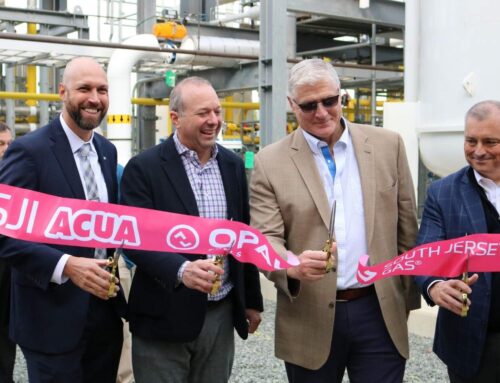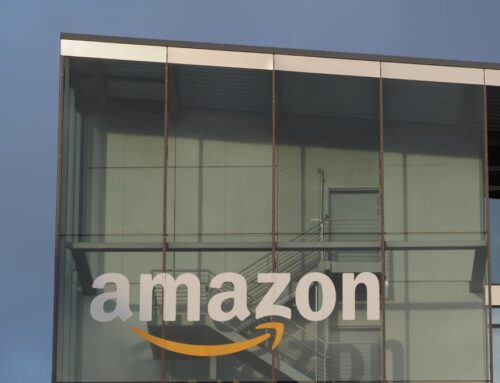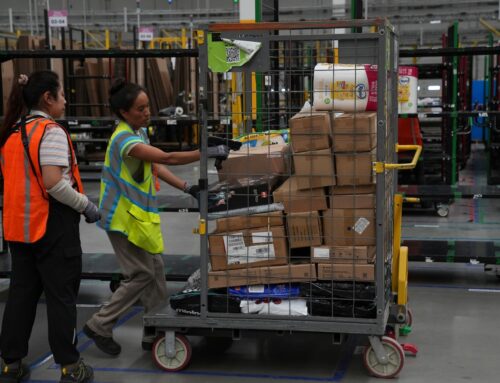The robot takeover is closer than you think. What happens to human jobs?
October 24, 2025
WhenAmazonfirst introduced robots into its warehouses more than a decade ago, they looked harmless — squat, orange pucks gliding across the floor, ferrying shelves of goods to human workers. Today, those little “helpers” represent something much bigger: a seismic shift in how work itself is done.
According to internal strategy documents obtained by The New York Times, Amazon now believes it can replace more than half a million jobs with robots over the next decade. The company expects to avoid hiring 160,000 workers in the US by 2027, which would save roughly 30 cents per item picked, packed, and shipped.
It’s already inching close to that reality. Amazon’s global fulfilment network now employs over one million robots, nearly matching its 1.5 million human workers. Most customer orders are already processed with robotic assistance, and analysts expect the company’s warehouse operations to reach robot-human parity by 2026, according to GeekWire.
Also Read: Amazon sees faster delivery speeds with hi-tech driver eyeglasses, AI
Daron Acemoglu, the MIT economist who won last year’s Nobel Prize in economic science, called Amazon’s plans a potential turning point. “Once they work out how to do this profitably, it will spread to others, too,” he told NYT. “One of the biggest employers in the United States could become a net job destroyer, not a net job creator.”
The rise of the machine workforce
The trend isn’t confined to Amazon.Walmart, the largest private employer in the US, plans to fit 90 million grocery pallets with AI-driven sensors by 2026, cutting routine tasks like temperature checks and manual tracking, the Financial Times reported. The company said it’s not eliminating jobs but “removing monotonous tasks from as many roles as possible.”
American logistics giant, UPS, too, is deep in transformation. Its $9 billion “Network of the Future”, unveiled in 2024, aims to close 200 US sorting facilities while building 400 automated ones by 2028. The logistics giant expects automation to boost its operating margins to 12% by 2026, according to a 2024 investor presentation.
Even Tesla, long synonymous with the future of driving, is testing its fully autonomous “robotaxi” service in Austin, Texas, albeit with mixed results. NBC News reported multiple incidents where cars drove on the wrong side of the road, broke traffic laws, or braked abruptly without reason. Waymo, Alphabet’s self-driving division, has faced similar setbacks, with one of its cars filmed illegally passing a stopped school bus in Georgia, CBS News said.
And then there’s Amazon’s Prime Air, the futuristic drone delivery service. It was temporarily grounded this summer after two drones collided with a crane in Arizona, sparking a fire, according to CNN. The company said it has resumed operations after “enhanced visual landscape inspections.”
The pace of change is staggering not just for companies but for countries, too. According to the International Federation of Robotics (IFR, 2023), South Korea now operates about 1,012 industrial robots per 10,000 manufacturing employees — roughly 10 robots for every 100 humans — the highest robot density in the world. Singapore ranks close behind at around 770 robots per 10,000 employees. While robots haven’t yet outnumbered humans outright, these figures highlight how deeply automation has taken root in some economies.
These incidents highlight an uncomfortable truth: while the technology is advancing rapidly, it’s far from perfect.
What happens to human jobs?
While automation and AI are reshaping workplaces at a dizzying pace, humans remain far from obsolete. According to the World Economic Forum’s Future of Jobs Report 2025, by 2030, macrotrend-driven changes — including AI and automation — will affect roughly 22% of today’s formal jobs. Specifically, 170 million new jobs are expected to emerge, while 92 million current jobs could be displaced, resulting in a net growth of 78 million jobs worldwide.
Reskilling will be critical. Of 100 global workers, 59 will need upskilling or reskilling by 2030 — but 11 may not receive it, putting over 120 million at medium-term risk of redundancy. Half of employers globally plan to reorient their business to leverage AI-driven opportunities, with 77% planning to upskill workers. At the same time, 41% anticipate workforce reductions, though nearly half expect to transition staff into other roles to mitigate the human cost of technological transformation.
US-specific data from the Society for Human Resource Management (SHRM) 2025 Automation/AI Survey paints a similar picture. About 15.1% of US employment — roughly 23.2 million jobs — is already at least 50% automated. Most affected occupations are computer and mathematical roles (32%), production (22.8%), and architecture/engineering (21.7%). Roles involving interpersonal skills or low-tech tools, such as education and healthcare, face significantly lower automation risk, the survey noted.
Taken together, these findings underscore that automation is as much about job transformation as it is about elimination.
Why humans still matter
Even Amazon admits human intervention is critical. “It’s not humans versus machines at all,” said Tye Brady, Amazon’s chief robotics technologist, in a 2019 BBC interview. “It’s humans and machines working together to achieve a task.”
Brady described automation as a “symphony” of humans and robots, each enhancing the other’s capabilities. Machines excel at precision and endurance, but people still dominate in dexterity, creativity, and compassion. Robots, for instance, still struggle to pick up irregularly shaped objects, a task human hands can perform effortlessly.
The company has said it plans to retrain workers for technical roles, citing its mechatronics apprenticeship program, which has upskilled about 5,000 employees since 2019. “It can be a very successful path,” Udit Madan, Amazon’s global operations head, told NYT.
The economics of disruption
Goldman Sachs estimates that up to 50% of jobs worldwide could be automated by 2045, largely through generative AI and robotics. Yet the firm’s researchers are cautiously optimistic. In a 2025 report, they noted that 60% of US workers today are in occupations that didn’t exist in 1940, meaning more than 85% of employment growth since then stems from technology-driven job creation.
In other words, while automation replaces some jobs, it also creates new ones. “Technology change tends to boost demand for workers in new occupations,” the report said. That’s how economic revolutions — from the industrial age to the computer era — have unfolded time and again.
Oxford Economics reached a similar conclusion. It found that automation would disproportionately affect repetitive, low-skill jobs but that “compassion, creativity or social intelligence” remain uniquely human advantages, ones likely to be irreplaceable “for decades to come.” The firm estimated that a 30% increase in robot installations worldwide could add $5 trillion to global GDP.
Still, as Gartner’s analyst Helen Poitevin warned, the transition won’t be smooth. When AI takes over basic tasks, “employees starting roles in professions where AI has already received extensive investment often have to start with more complex work from their first day.” Companies are struggling to find workers skilled enough to handle these roles — widening the gap between those who can adapt and those who can’t.
(You can now subscribe to our Economic Times WhatsApp channel)
Search
RECENT PRESS RELEASES
Related Post



